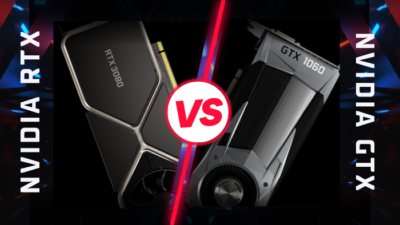With the release of AMD’s latest & greatest GPU architecture, RDNA 3, has created both hype & confusion among general consumers. How is it any different than the previous RDNA 2 architecture and how much performance+efficiency gain can we expect from it?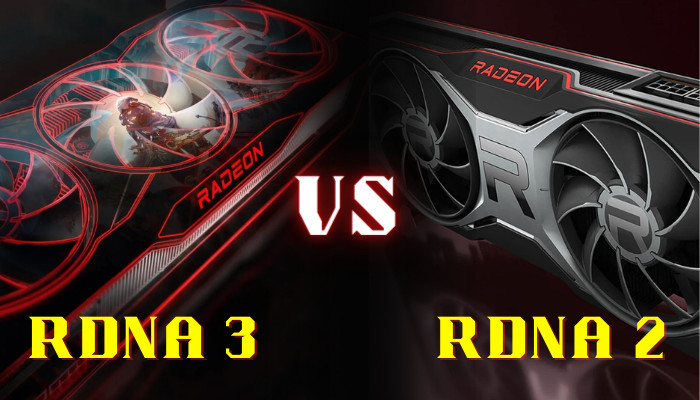
If you’ve been asking yourself these same questions, you’ve come to the right place.
Let’s take a look at the architectural and performance overview for RDNA 3 vs RDNA 2.
What is RDNA?
RDNA is AMD’s new microarchitecture and accompanying instruction set for graphics processing. This newer, more advanced architecture is designed for efficiency and high performance gaming while being backwards compatible with the previous GCN architecture. 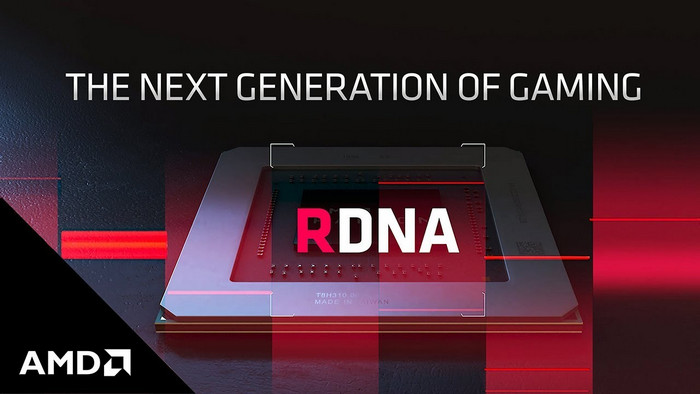
Although it uses the same basic instruction core as GCN architecture, AMD has fundamentally reorganized the data flow within the processor. Thus, boosting the performance and efficiency to much greater heights. 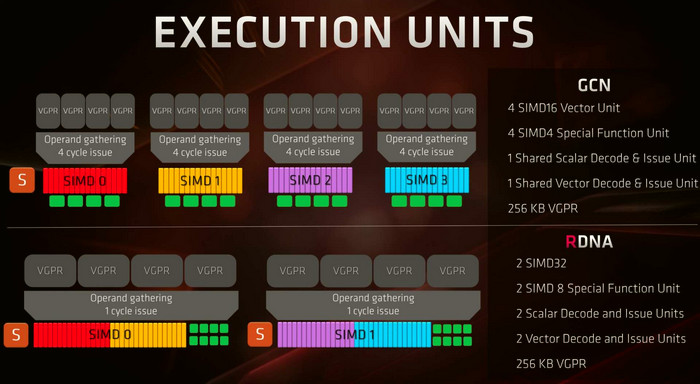
From RDNA 2 and above, AMD has introduced hardware-accelerated Ray Tracing and Infinity Cache for unprecedented visuals without any significant performance penalty. 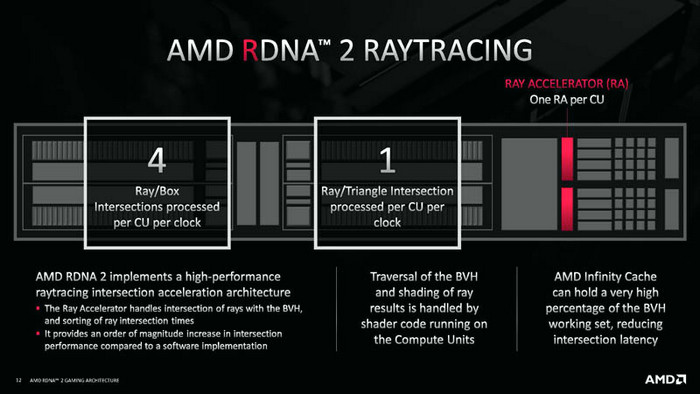
Additionally, this newer architecture uses GDDR6 video memory instead of older GDDR5 modules. This along with the newer CU core design and boosted FP/INT Ops offer noticeably better productivity performance.
With each generation, AMD has been incrementally improving the RDNA core architecture. As a result, you can expect to see a noteworthy increase in new features, performance and efficiency when comparing RDNA 1 to RDNA 2 or RDNA 2 to RDNA 3. This brings us to our next topic…
Read more on how to benchmark your Graphics Card.
What’s the Difference Between RDNA 3 and RDNA 2?
AMD’s RDNA 3 architecture-based GPUs are produced using TSMC’s 5nm node, whereas RDNA 2 cards are manufactured based on the company’s 7nm FinFET process. The technical differences don’t end there. RDNA 3 microarchitecture uses a chiplet design while the RDNA 2 chips used a monolithic die design. 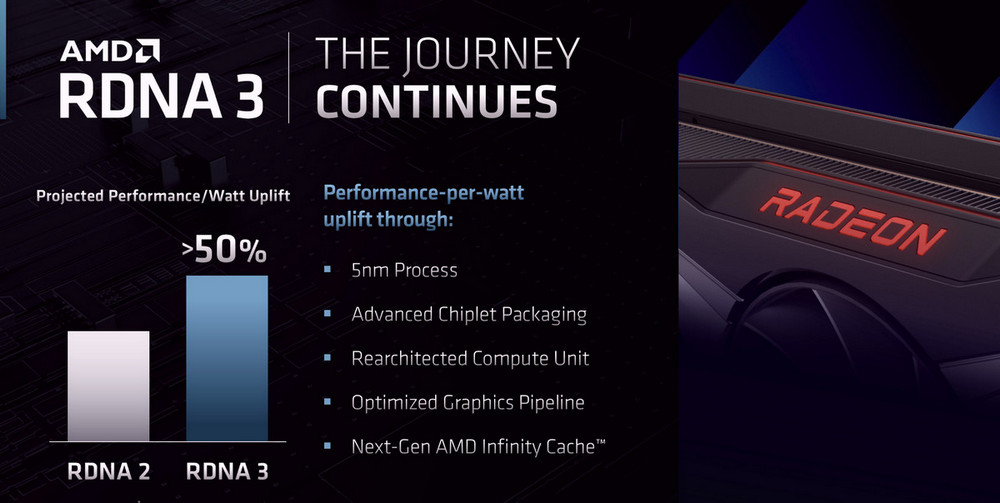
Additionally, RDNA 3 uses the enhanced compute unit pair. Each WGP(workgroup processor) is still comprised of two CUs, just like RDNA 2. But, each CU now has two ALUs and two vector units. 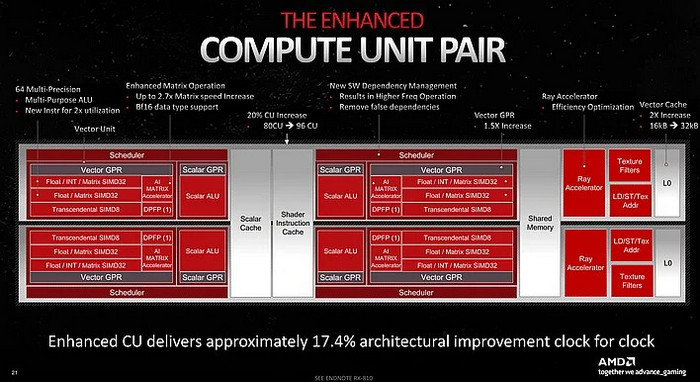
So, although the number of WGP and CU remains the same, each CU now has twice the resources. The actual shader count from RDNA 2 to RDNA 3 hasn’t improved beyond 20%(each SKU), but each shader in RDNA 3 has twice as many functional units as before.
Even though RDNA 2 also has Infinity Cache, AMD claims that the 2nd gen Infinity Cache that’s included in RDNA 3 based GPUs can raise the gaming performance bar even higher. It’s connected through an ultra-high chiplet interconnect fabric capable of 5.3TB/s data throughput.
One particular improvement in RDNA 3 over RDNA 2 is the lower-level cache bump. L0 cache has increased double in size, now boasting 32kB along with decreased latency.
Not only that, new AI Accelerators and 2nd gen Raytracing Accelerators are also a part of the new RDNA 3 fab. Mind you, it still uses only one Raytracing Accelerator per CU. 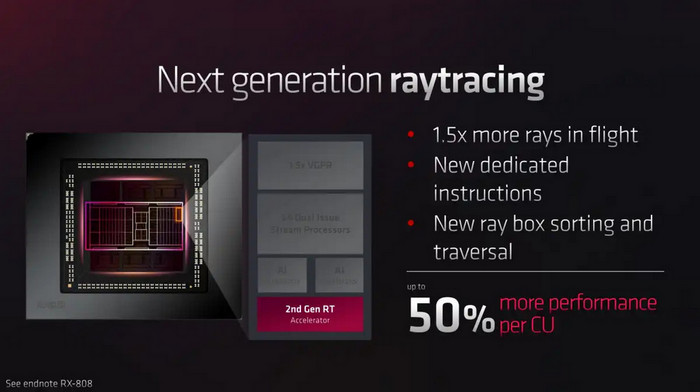
But AMD is confident that it can deliver up to 80% RT performance over RDNA 2, thanks to early subtree culling and advanced cache. 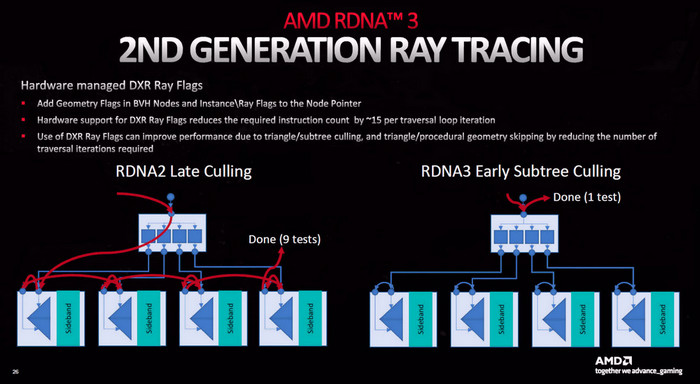
Another major difference between RDNA 2 and RDNA 3 is the support for the AV1 encoder. RDNA 3 supports dual media engine with AV1 encoder/decoder and ML-enhanced video output.
Here’s a quick look at RDNA 3 vs RDNA 2:
| Attributes | RDNA 3 | RDNA 2 |
|---|---|---|
| Node | 5nm | 7nm |
| Die | Chiplet | Monolithic |
| RT Accelerator | 1st Gen | 2nd Gen |
| AI Accelerator | ╳ | 1st Gen |
| Infinity Cache | 1st Gen | 2nd Gen |
Now that we know the technical differences between the two microarchitecture, let’s take a look at how much they differ in gaming and rendering workloads.
Follow our guide on what to do with old Graphics Card?
RDNA 3 vs RDNA 2: Gaming Performance Gain
For this, I’m gonna use the top dog of RDNA 2, the RX 6900 XT, and pit it against its RDNA 3 counterpart, the RX 7900 XT. My test bench also includes Intel Core i9 13900K, 32GB DDR5 RAM, Rog Maximus Z790 Extreme, 1TB Samsung 980 Pro, and Corsair HX1200 80+ Platinum.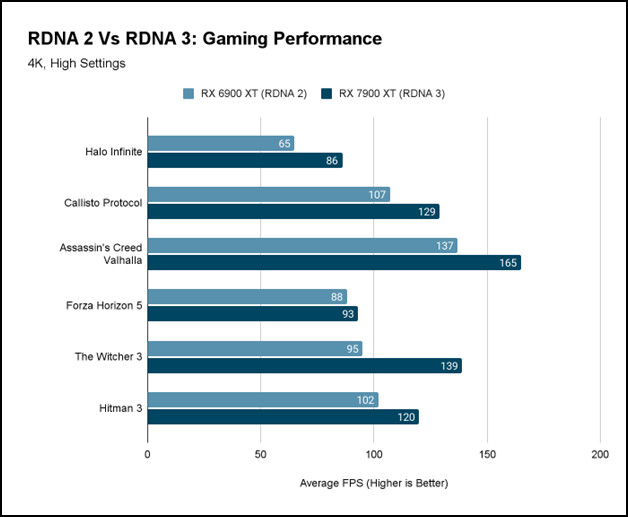
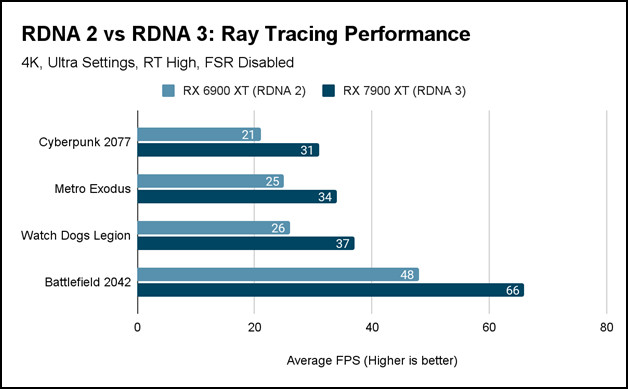
As we can see, the 7900 XT provided almost 20% more performance on average while consuming 14% more power than the 6900 XT. The power consumption of 6900 XT hovered around 280 watts, and 320 watts for 7900 XT.
The power efficiency is even more impressive when we look at the ray tracing performance. Although it wasn’t nearly as much high as AMD claimed, RDNA 3 still managed to deliver over 35% more RT gaming performance than RDNA 2.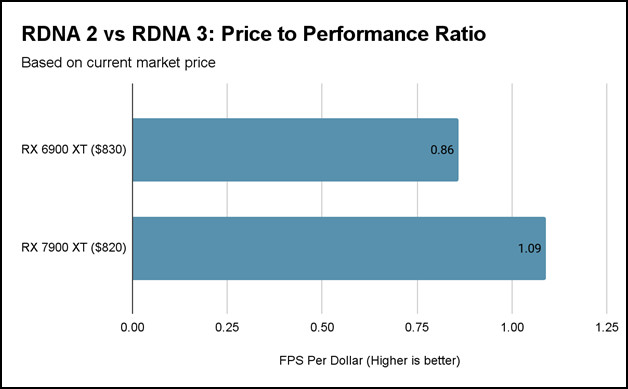
And the positive side doesn’t end there. When we consider the price-to-performance ratio between RX 6900 XT and 7900 XT, it’s pretty clear that RDNA 3 is a much better bang for buck compared to the RDNA 2 SKU.
Go through our epic guide on do you need two Graphics Cards for Dual Monitors.
RDNA 3 vs RDNA 2: Productivity Performance Gain
Now, let’s switch our perspective from gaming to productivity workloads. RDNA 3 promises not only a noticeable performance uplift in gaming but also a decent reduction in render time.
I’ve run some of my usual rendering apps to see how much this newer microarchitecture has improved over the last gen in terms of productivity.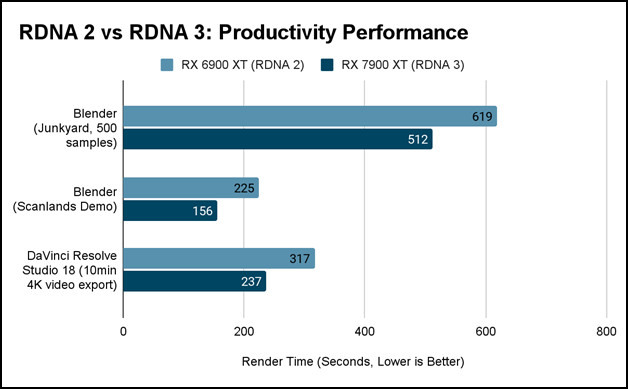
Just like in gaming, RDNA 3 has proven to be an equally worthy upgrade over RDNA 2 when it comes to 3D rendering and video editing. DaVinci Resolve is my go-to video editing tool, and the newer RX 7900 XT has not disappointed me at all in reducing the export time.
The same can be said for Blender, V-Ray, Maya, and all the other 3D modeling/rendering applications. All worked perfectly, and I got a much smoother experience in all of them while using the real-time preview mode.
In a nutshell, RDNA 3 doesn’t offer anything groundbreaking when you take a look at its real-world performance uplift over RDNA 2, but it’s definitely a much more efficient architecture and offers a better bang for buck over its predecessor; unless you can find an RDNA 2 graphics card at a discounted price.
Check out the easiest way to configure discrete Graphics Card to Run in AMD crossfire mode.
FAQs
Will RDNA 3 be better at ray tracing?
RDNA 3 is definitely better than RDNA 2 in terms of ray tracing performance, but it still lags behind Nvidia’s RTX offering.
Which AMD GPU is best in ray tracing?
Radeon RX 7900 XTX is currently the best ray-tracing AMD GPU on the best.
Is RDNA 3 better?
Yes. RDNA 3 is simply a better architecture than AMD’s previous ones.
Conclusion
To wrap it up, in case you’re shopping for a GPU and stuck between the two architectures to choose from, consider your priorities and budget. RDNA 3 GPUs offer a decent performance uplift but cost a lot more than RDNA 2.
If you’re tight on budget, you can save a few bucks by picking up an RDNA 2 GPU at a discount price since RDNA 3 doesn’t offer anything groundbreaking over RDNA 2.
That’s about it. Hopefully, this write-up has helped you make a sound purchase decision. Have a nice day!



